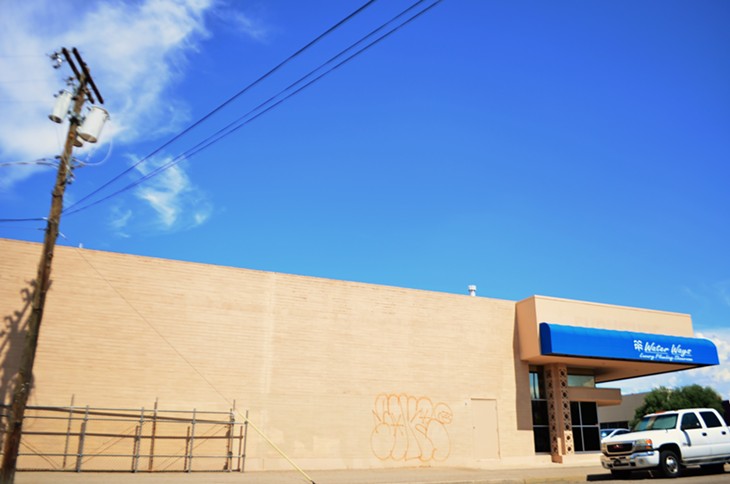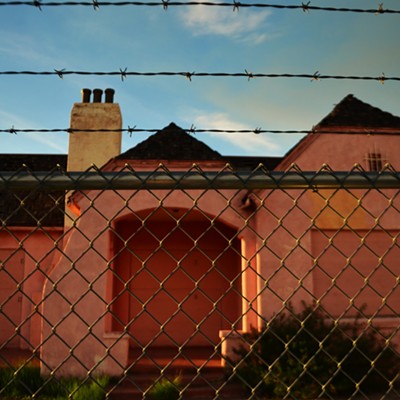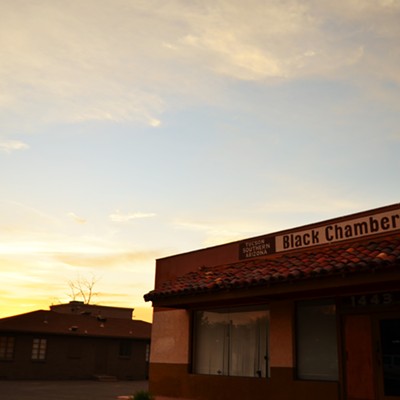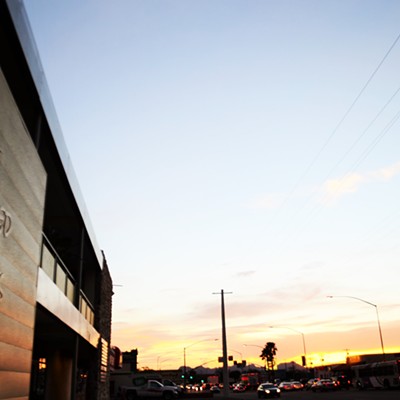Over the last five years, Rick McGarrey has spent $600,000 fixing up his Broadway Boulevard property. He could have spent another quarter of a million dollars on his energy-efficient office spaces, but when he heard about the latest proposal for the Broadway widening project, he canceled all future renovations.
If the plan—unanimously approved by the Tucson City Council in June—remains as is, a south traffic lane would go through his parking lot and in the face of his property's front door."If they take my parking, this would be fatal for me," says McGarrey, who owns Sun Powered Offices, a couple of blocks east of Campbell Avenue. "My clients and tenants will go to where there is parking. I would be pretty close to being under water. (The city) can't take my parking away and say, 'Well, maybe we will give you a lot somewhere else.' Most people want to pull into the front like they would at a convenience store."
This new design felt like a rug had been pulled from underneath him. He, and other business and property owners along Broadway, felt sabotaged and ignored by the Broadway Citizens Task Force—made up of reps from the business and neighborhood worlds—and the city.
The saga goes like this: The original Broadway alignment (stretching from Euclid Avenue to Country Club Road), approved by voters in 2006, took property along the north side of Broadway to widen the boulevard, and left property along the south side (where Solar Powered Offices stands) pretty much untouched. That plan was officially replaced in March with one that would take property on both sides of the street. It also narrows sidewalks and bike lanes to 6 feet; and turns thick strips of landscape into patches of green here and there. With this design, Broadway would be no wider than 98 feet, saving roughly 40 historic properties and businesses from demolition.
What's frustrating to business and property owners on the south side is that, for decades, many of them have invested large quantities of money fluffing up their buildings, thinking these wouldn't be affected by the close-to-30-year-old project. Many on the north anticipated the city to purchase their buildings, so they chose not to invest in renovations.
Some, such as Film Creations Ltd. owner Rick Rose, bought property elsewhere to relocate, because since the 1990s, he's been told the city would purchase his building. Christopher Boney, owner of plumbing and hardware store Water Ways, and Diana Madaras of Madaras Gallery Inc. (also on north Broadway), feel they have been held hostage in a dead zone, unable to lease or sell, without money to afford renovations if they're needed down the road—all at the mercy of the city, as well as residents who, as McGarrey describes, don't even own a business in the area.
Initially, the Regional Transportation Authority ballot measure from nine years ago said five-lane Broadway would morph into an eight-lane roadway, with two lanes dedicated to transit, and decent-sized bike lanes and sidewalks; a 150-foot-wide, re-vitalized "business corridor."
But over time, amid grand opposition from neighborhood residents and others, that idea was downgraded to six lanes—a total of 120-foot-wide—in the fall of 2014. (That plan would have required the demolition of close to 40 historic properties and businesses.)
However, during a heated meeting on March 19, the task force pushed for more changes. They claimed city transportation planners had ignored the group's suggestions (preservation of as many historic buildings as possible was among that pile) from the past two years.
"This wasn't highjacked or done behind the scenes, it was a major change but it was because we had been asking for it, and asking for it, and finally it happened, but it was all in public meetings," says Colby Henley, who represents the Rincon Heights National Register Historic District on the task force. "Businesses have been told so many different things by the city, and finally we are done with the design. I sympathize with the businesses that have had to struggle through this whole thing."
Property owner Greg Clark says the task force had been aware of every step of the process and had agreed to every compromise. "This is just fiction, and shouting down the (city transit) staff is not the way to do it. These people are professionals and they are working hard to design roadways that the voters approved (in 2006)," Clark says. The 120-foot-wide design from last fall was a proposal most people were content with. Further changes made by the task force, resulting in the latest design, came out of left field to Clark and others, he says.
While the business owners feel voiceless, City Councilman Steve Kozachik, whose ward includes the Broadway project, says there have been hundreds of hours of public meetings, where anybody who was a stakeholder could participate. So, "for someone to show up at this point and say 'We didn't know' or 'We didn't have a chance' is disingenuous," he says. He reminds businesses that what the City council voted on two months ago is still a work in progress. "Any one of the business or private property owners can, right now, reach out to the city's Office of Integrated Planning, sit down with them one-on-one."
James MacAdam with the Office of Integrated Planning says he's already met with a handful of businesses. And Beth Abramovitz, the city's Department of Transportation engineering project manager, urges business and property owners not to assume they will be left in limbo to deal with the parking lot situation. The city will help provide solutions to all, she says.
Other public meetings are scheduled for the fall, according to Kozachik. Land acquisition will not begin until next year, and property negotiations aren't happening until 30 percent of the project's technical design is done. Construction isn't expected until late 2017 to 2018.
McGarrey has advice for the city: Do not start this 30 percent design thing before you know the plan is going to work. It will be a waste of tax payer dollars.
"If you are going to have a commercial corridor, why would you design something that the people, who do the commerce, don't want and would put them out of business?" he asks. "For about a week I felt very stupid, (investing) into this building without knowing ... without being smart enough to know they are going to destroy it. Now, I am starting to think the plan is so bad, I just can't imagine that they would follow it."
See the map here :

















